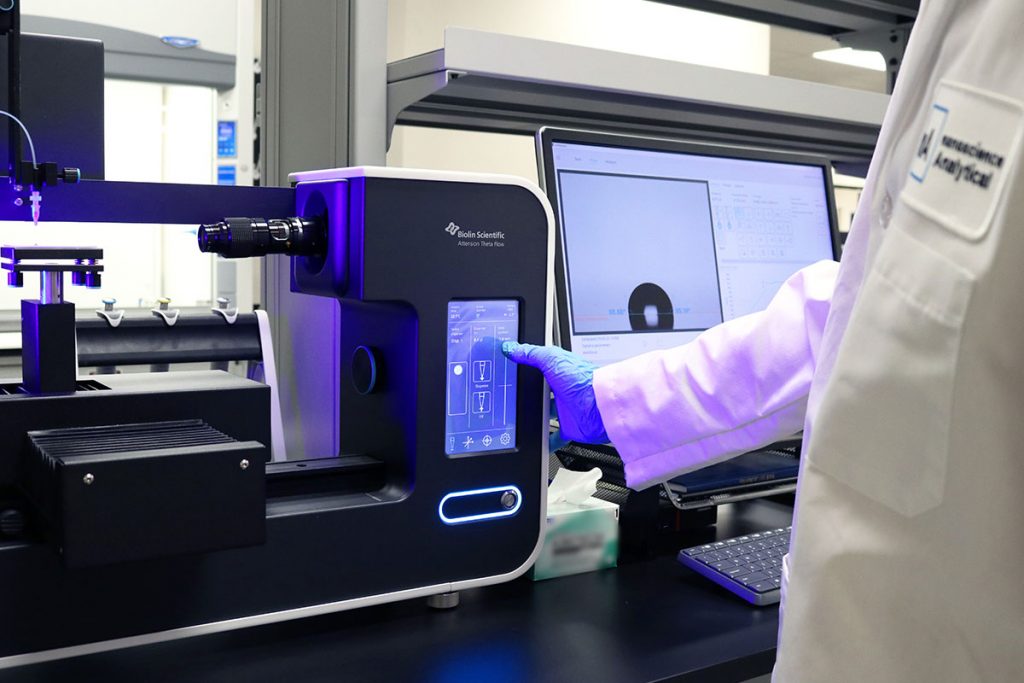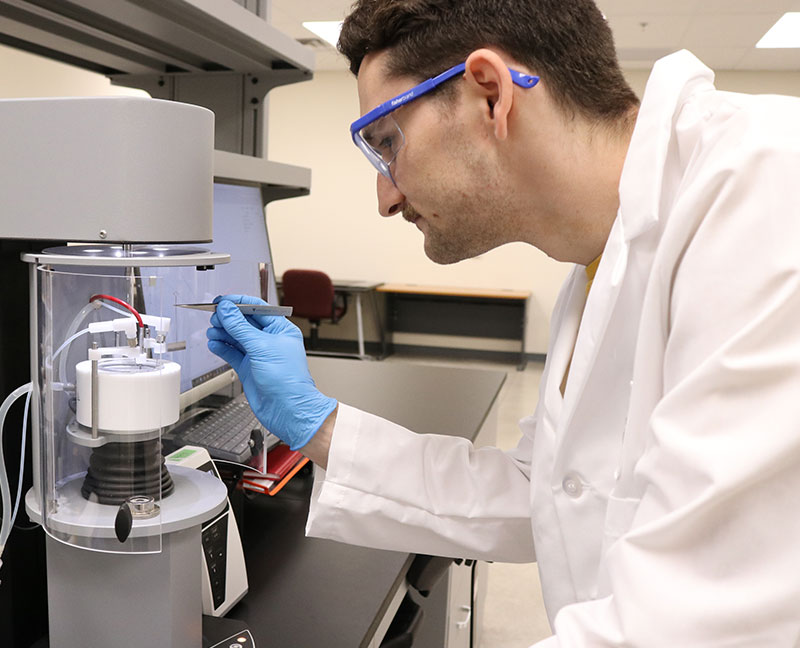Contact Angle Goniometry & Surface Tension Measurements

Optical & Force Tensiometry
We offer static and dynamic optical and force tensiometry for surface tension measurements, contact angle measurements, and surface free energy measurements with high precision.
These techniques are used to characterize material surface properties and interfacial interactions between gas, liquid, and solid phases. Also known as contact angle goniometers or contact angle meters, they are instruments of choice to characterize surfaces. Our heavily accessorized instruments can accommodate many different materials for a wide variety of applications.
Standard Capabilities:
Static Contact Angle
Sessile drop or meniscus methods
Contact angle measurements reveal hydrophobicity/hydrophilicity, the efficacy of surface treatments, and the wettability of your substrate’s surface.
Dynamic Contact Angle
Tilting drop, Wilhelmy plate/fiber, or
Automated needle-in drop volume methods
Advancing and receding contact angles along with the contact angle hysteresis indicate surface chemical or topographical heterogeneity, provide the most reproducible measurement of surface wettability, predict adhesive behavior of coatings, and many other application areas.
Surface Tension
Pendant drop/bubble, du nouy ring, or wilhelmy plate methods
Drop shape analysis and force tensiometer probe measurements to determine the surface tension of liquids at low volumes and under dynamic or equilibrium conditions.

Additional measurements
Surface Free Energy Measurement
Sessile drop, wilhelmy plate, meniscus, or washburn methods
Surface free energy (units of mN/m or dynes/cm) uses contact angle measurements from several probe liquids to deliver a comprehensive assessment of your surface’s wetting properties, including contributions from polar, dispersive, and acid/base molecular interactions.
Powder Wettability Measurement
Washburn or sessile drop methods
This technique can determine the contact angle between a solvent and powder, particles or bundle of fibers, such as samples relevant to pharmaceuticals, cosmetics, clothing, and more.
Roughness-corrected Static Contact Angle
Sessile drop method with topography measurement
This technique involves a precise roughness measurement followed by a contact angle measurement at the same location to provide a more complete picture of wettability. The roughness correction allows for the decoupling of a substrate’s surface chemistry from its 3-D topography which contributes to the overall wettability as measured via contact angle.
Interfacial Tension
Pendant drop and du nouy ring methods
Drop shape analysis and force tensiometer measurements can measure the interfacial tension measurements between two immiscible liquids, such as oil-water systems.
Critical Micelle Concentration (CMC)
Pendant drop/bubble method, du nouy ring method, or wilhelmy plate method
Surface or interfacial tension measurements over a wide range of surfactant concentrations are used to establish the surface tension as a function of surfactant concentration and determine the point of CMC.
Dilatational Interfacial Rheology
Pulsating drop/bubble method
This technique provides the complex dilational modulus for a droplet/air or droplet/immiscible liquid interface, including the viscous and elastic components, indicating the stability of foams, emulsions, or other viscoelastic films.
Liquid Density
Buoyancy force measurement
The density of a liquid is measured with high precision by measuring the buoyancy of a solid with well-defined geometry when immersed in the sample liquid.
Contact Us
We are a multi-disciplinary laboratory committed to providing our expertise and efficient analytical services.

